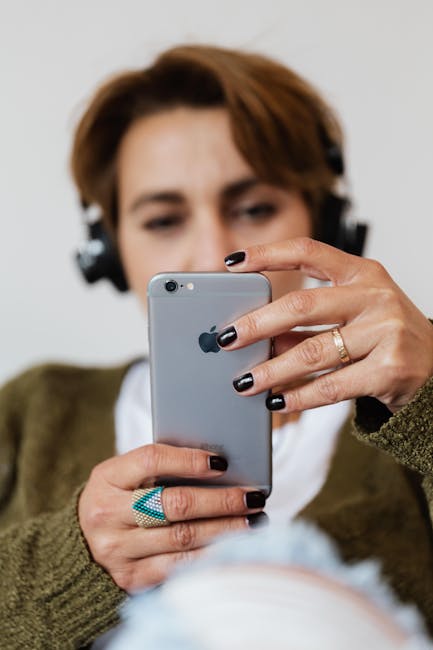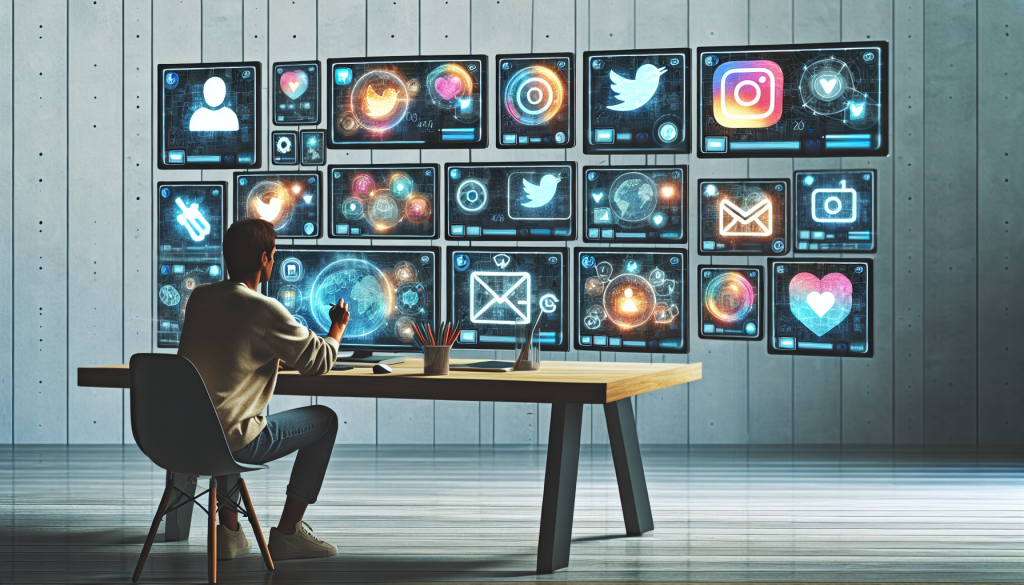Managing social media overwhelm can feel like trying to juggle flaming torches while riding a unicycle—it’s exhausting, chaotic, and downright stressful. But here’s the good news: it doesn’t have to be this way. By learning how to set boundaries, curate your feed, and take intentional breaks, you can regain control and make social media work for you, not against you. Stick around, and we’ll explore practical strategies to help you breathe easier in this hyperconnected world.
Key Takeaways
- Social media overwhelm stems from overconsumption, constant connectivity, and unrealistic expectations.
- Setting boundaries and limiting screen time are essential first steps.
- Curating your feed and using tools can make your experience more positive and efficient.
- Taking breaks and practicing mindfulness can help you recharge.
- Delegating tasks or outsourcing can reduce the pressure of managing multiple accounts.
Understanding Social Media Overwhelm
Definition and Causes
Social media overwhelm happens when the sheer volume of content, notifications, and interactions becomes too much to handle. It’s like trying to drink from a firehose—impossible and overwhelming.
Overconsumption of Content
Scrolling endlessly through posts, videos, and memes can lead to information overload. Your brain wasn’t designed to process this much data all at once.
Pressure to Stay Constantly Connected
The fear of missing out (FOMO) keeps many of us glued to our screens. Add to that the pressure to respond instantly to messages, comments, and likes, and it’s no wonder we feel drained.
Signs and Symptoms
Increased Stress and Anxiety
Do you feel a knot in your stomach every time your phone buzzes? That’s a classic sign of social media stress.
Difficulty Focusing on Tasks
If you find yourself checking Instagram when you should be working, you’re not alone. Social media can seriously mess with your focus.

Setting Boundaries for Social Media Usage
Designating Specific Times for Social Media
Creating a Daily Schedule
Set specific times for checking social media—maybe during your lunch break or after dinner. This way, you’re in control, not your phone.
Avoiding Usage During Work or Personal Time
Keep your phone out of reach during work hours or family time. Trust me, the world won’t end if you don’t check TikTok for a few hours.
Limiting Screen Time
Using App Timers and Restrictions
Apps like Screen Time (iOS) or Digital Wellbeing (Android) can help you set daily limits. Think of them as your digital babysitter.
Turning Off Notifications
Disable non-essential notifications. Do you really need to know the second someone likes your post? Probably not.

Curating Your Social Media Feed
Following Accounts That Align with Your Values
Identifying Positive and Inspiring Content
Follow accounts that make you feel good—whether it’s motivational quotes, cute animals, or educational content.
Unfollowing Accounts That Cause Stress
If someone’s posts make you feel inadequate or upset, hit that unfollow button. Your mental health is more important than their follower count.
Reducing Noise in Your Feed
Using Mute or Block Features
Don’t hesitate to mute or block accounts that clutter your feed. It’s your digital space—keep it clean.
Prioritizing Meaningful Interactions
Focus on engaging with people who matter to you. A heartfelt comment beats a hundred meaningless likes any day.

Utilizing Tools and Strategies for Efficiency
Scheduling Posts with Apps
Exploring Scheduling Tools Like Hootsuite or Buffer
Apps like Hootsuite or Buffer can help you plan and schedule posts in advance, saving you time and stress.
Planning Content in Advance
Batch-creating content can streamline your workflow. Spend one afternoon planning posts for the week, and you’re good to go.
Managing Multiple Accounts
Consolidating Platforms with Management Tools
Tools like Sprout Social let you manage multiple accounts from one dashboard. It’s like having a personal assistant for your social media.
Streamlining Engagement Processes
Set aside specific times to respond to comments and messages. This prevents you from getting sucked into the social media vortex.

Taking Breaks to Recharge
Practicing Digital Detox
Setting Aside Specific Days for No Social Media
Pick one day a week to go completely offline. Use that time to reconnect with yourself and the people around you.
Engaging in Offline Activities
Read a book, go for a walk, or try a new hobby. Life exists beyond the screen, and it’s pretty amazing.
Incorporating Mindfulness Practices
Practicing Meditation or Deep Breathing
A few minutes of meditation can help you reset and refocus. Apps like Headspace or Calm are great for beginners.
Staying Present During Social Media Use
When you’re online, be intentional. Scroll with purpose, not out of habit.

Limiting Exposure to Negative Content
Identifying Toxic Content
Recognizing Triggers for Stress or Anxiety
Pay attention to how certain posts make you feel. If something consistently stresses you out, it’s time to let it go.
Avoiding Controversial or Harmful Discussions
Not every battle is worth fighting. Sometimes, it’s better to scroll past the drama.
Creating a Positive Online Environment
Engaging with Supportive Communities
Join groups or forums that uplift and inspire you. A supportive network can make all the difference.
Sharing Uplifting and Constructive Content
Be the change you want to see online. Share posts that spread positivity and kindness.
Delegating Social Media Responsibilities
Hiring a Social Media Manager or Subcontractor
Outsourcing Tasks to Reduce Workload
If managing your accounts feels like a full-time job, consider hiring help. It’s an investment in your sanity.
Ensuring Consistent Content Creation
A professional can keep your accounts active and engaging, even when you’re offline.
Collaborating with a Team
Dividing Responsibilities Among Team Members
If you’re part of a team, divide tasks like posting, responding, and analytics. Many hands make light work.
Establishing Clear Roles and Expectations
Set clear guidelines to avoid confusion. Everyone should know what they’re responsible for.

Managing social media overwhelm isn’t about quitting cold turkey—it’s about finding balance. By setting boundaries, curating your feed, and taking breaks, you can turn social media from a source of stress into a tool for connection and growth.
For more tips on managing distractions, check out this guide. Or, if you’re feeling burnt out, here’s a helpful resource on dealing with burnout in demanding jobs.
Remember, you’re in control of your digital life. So take a deep breath, log off for a bit, and enjoy the real world—it’s pretty great out here.
FAQ: Navigating Social Media Overwhelm with Ease and Balance
What is social media overwhelm and why does it happen?
Social media overwhelm occurs when the constant influx of information, notifications, and comparisons on social platforms becomes mentally and emotionally exhausting. It often stems from excessive usage, fear of missing out (FOMO), and the pressure to stay constantly connected or updated.
How can I set boundaries to reduce social media overwhelm?
Setting boundaries involves limiting your screen time, turning off unnecessary notifications, and scheduling specific times for social media use. You can also designate ‘no-phone’ zones, such as during meals or before bedtime, to create healthier habits.
What are some practical tips for managing my time on social media?
Use tools like app timers or digital wellbeing features to monitor and limit your usage. Prioritize meaningful interactions over mindless scrolling, and consider unfollowing accounts that don’t add value to your experience. Scheduling breaks can also help you stay mindful of your time online.
How can I deal with the pressure to constantly post or engage on social media?
Remind yourself that your worth is not tied to your online presence. Focus on quality over quantity when posting, and engage only when it feels authentic. It’s okay to take a step back and prioritize your mental health over maintaining an active feed.
What role does mindfulness play in managing social media overwhelm?
Mindfulness helps you stay present and aware of your emotions while using social media. Practicing mindfulness can prevent you from getting lost in endless scrolling or negative comparisons. Techniques like deep breathing or reflecting on your purpose for using social media can be beneficial.
How can I curate my social media feed to make it less overwhelming?
Unfollow or mute accounts that trigger stress, negativity, or comparison. Instead, follow accounts that inspire, educate, or bring joy. A well-curated feed can transform your social media experience into a more positive and uplifting one.
What are the signs that I might need a social media detox?
Signs include feeling anxious, stressed, or drained after using social media, struggling to focus on other tasks, or comparing yourself excessively to others. If you notice these patterns, taking a break or reducing your usage can help you reset.
Are there any apps or tools to help manage social media usage?
Yes, apps like Moment, Freedom, or StayFocusd can help limit your time on social media. Most platforms also have built-in features to track and control your usage, such as Instagram’s ‘Your Activity’ or Apple’s Screen Time settings.
How can I balance staying informed without feeling overwhelmed?
Choose a few reliable sources for news and updates instead of following numerous accounts. Limit your time spent consuming news on social media, and consider setting specific times to check updates rather than constantly scrolling throughout the day.
What should I do if social media is negatively impacting my mental health?
If social media is affecting your mental health, consider taking a break or seeking support from a trusted friend, family member, or mental health professional. Remember, it’s okay to prioritize your well-being and step away from social media when needed.



